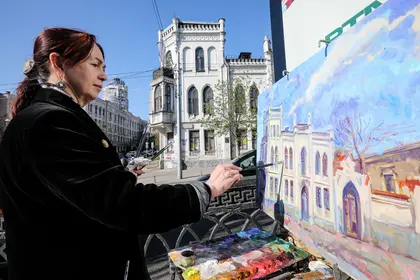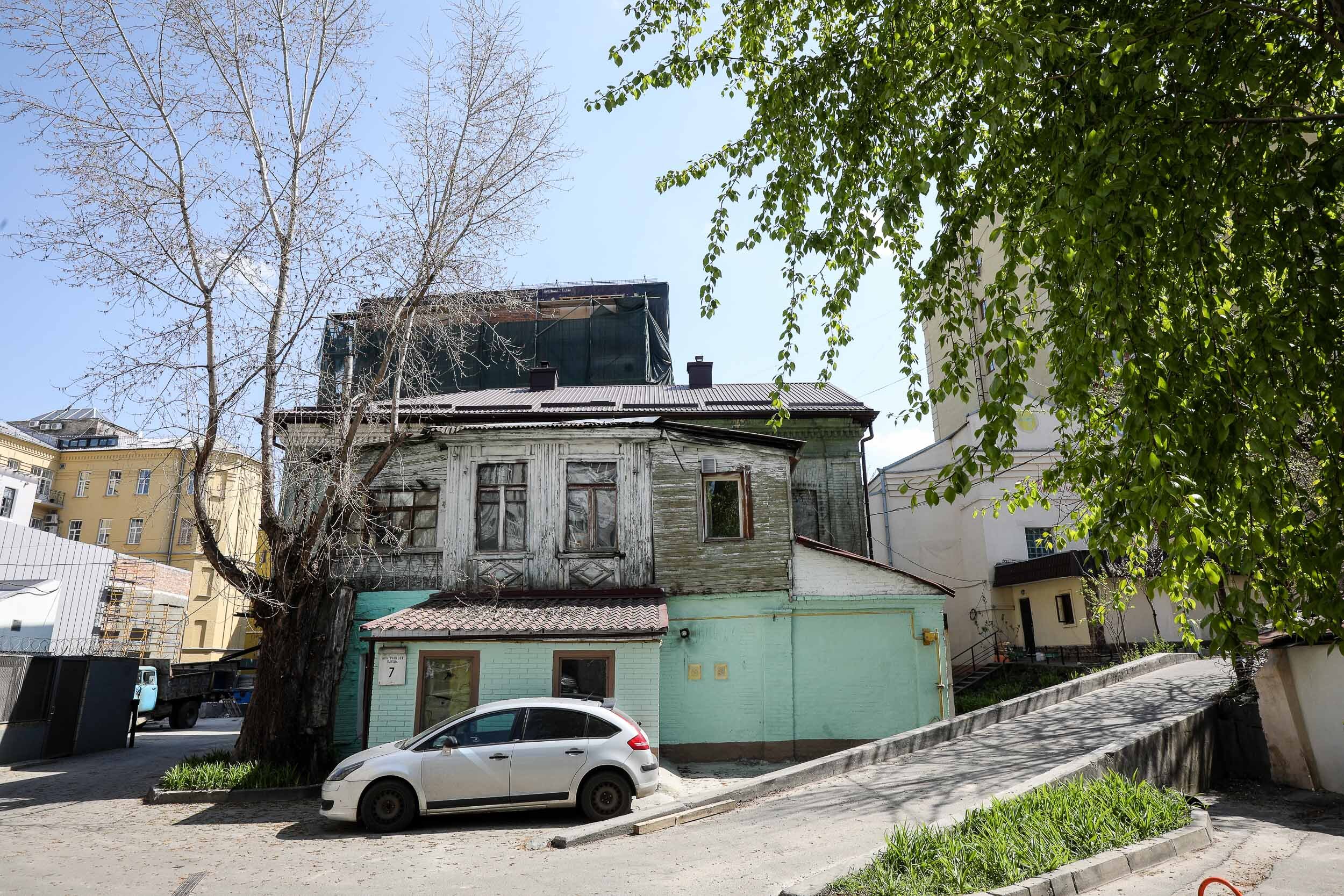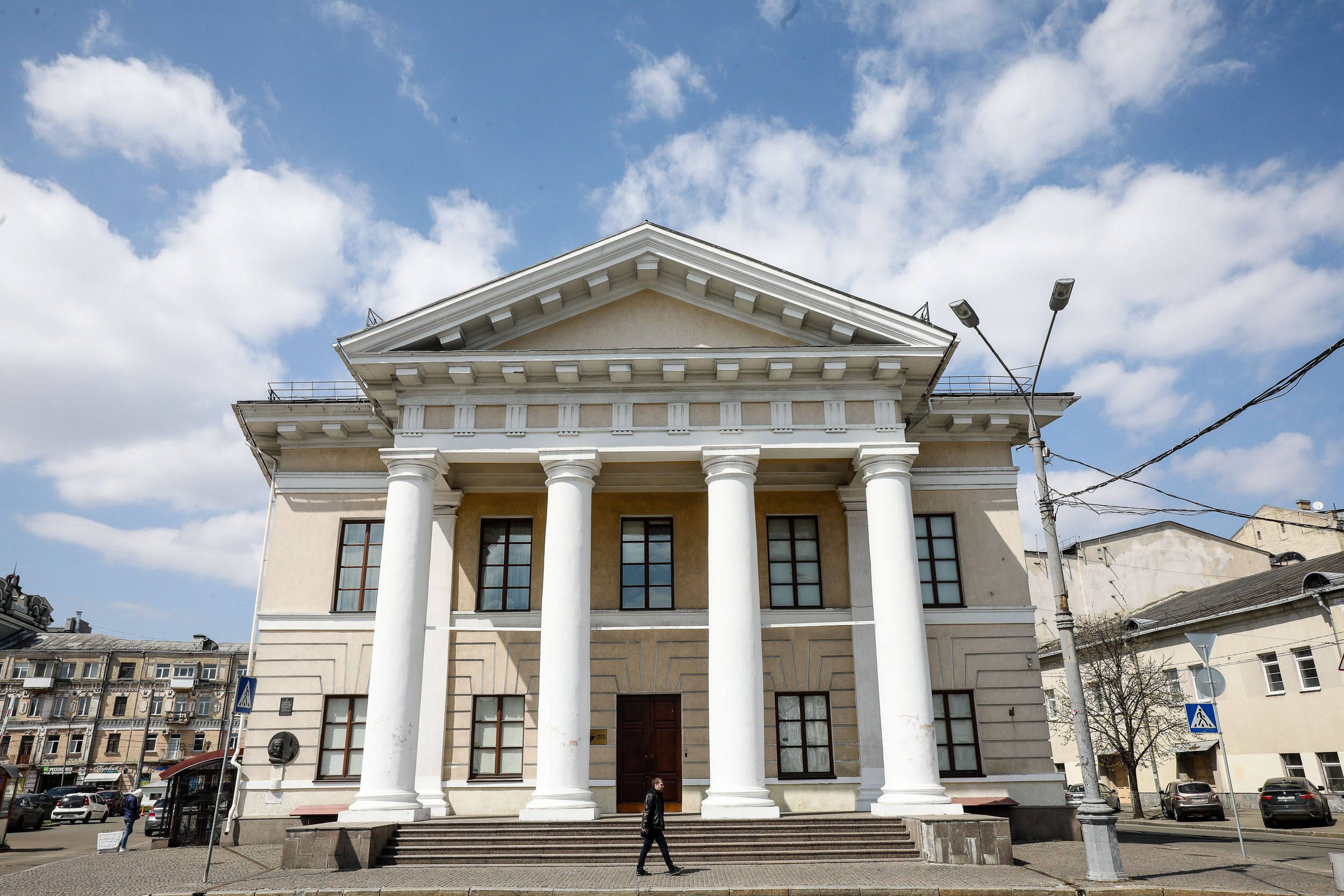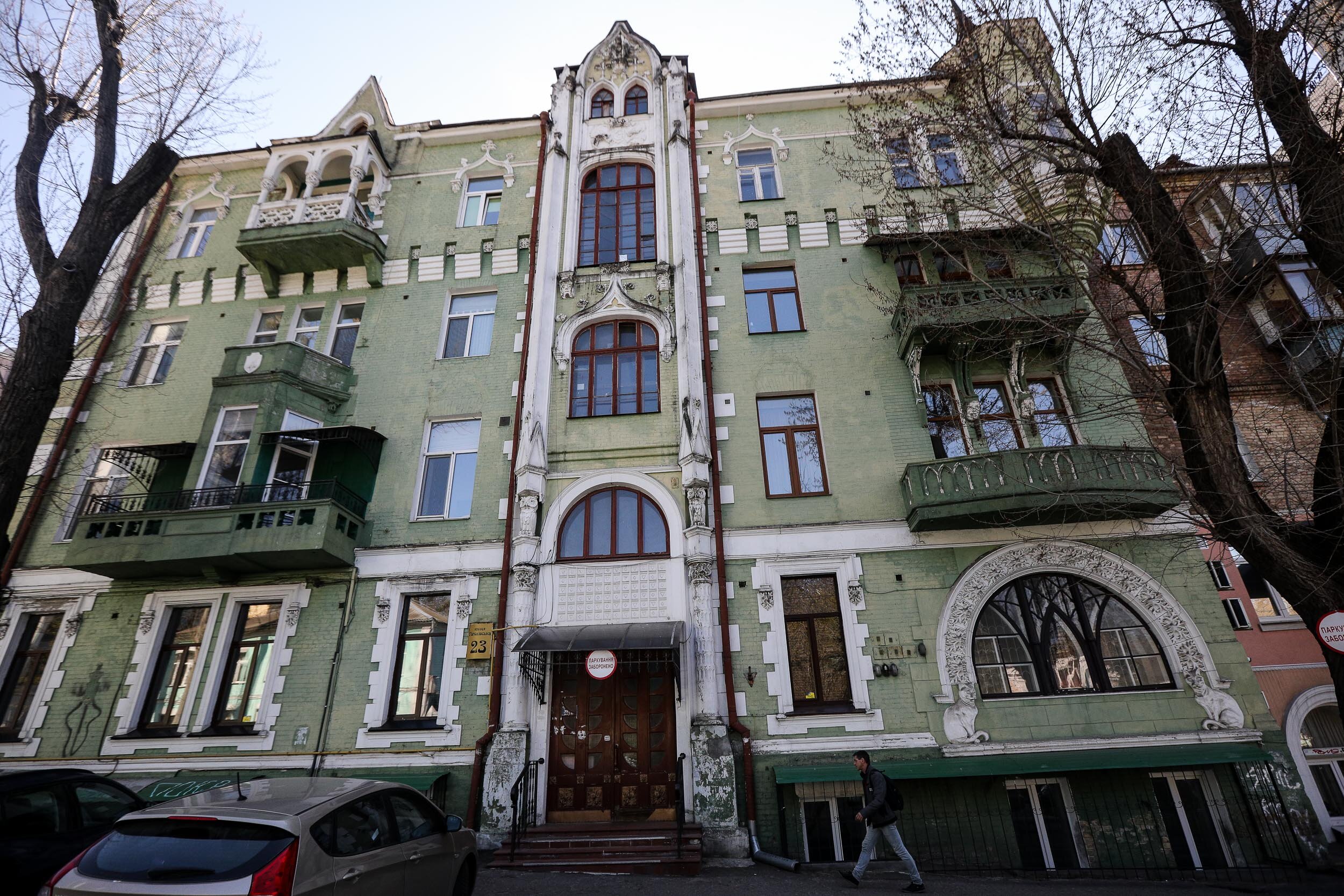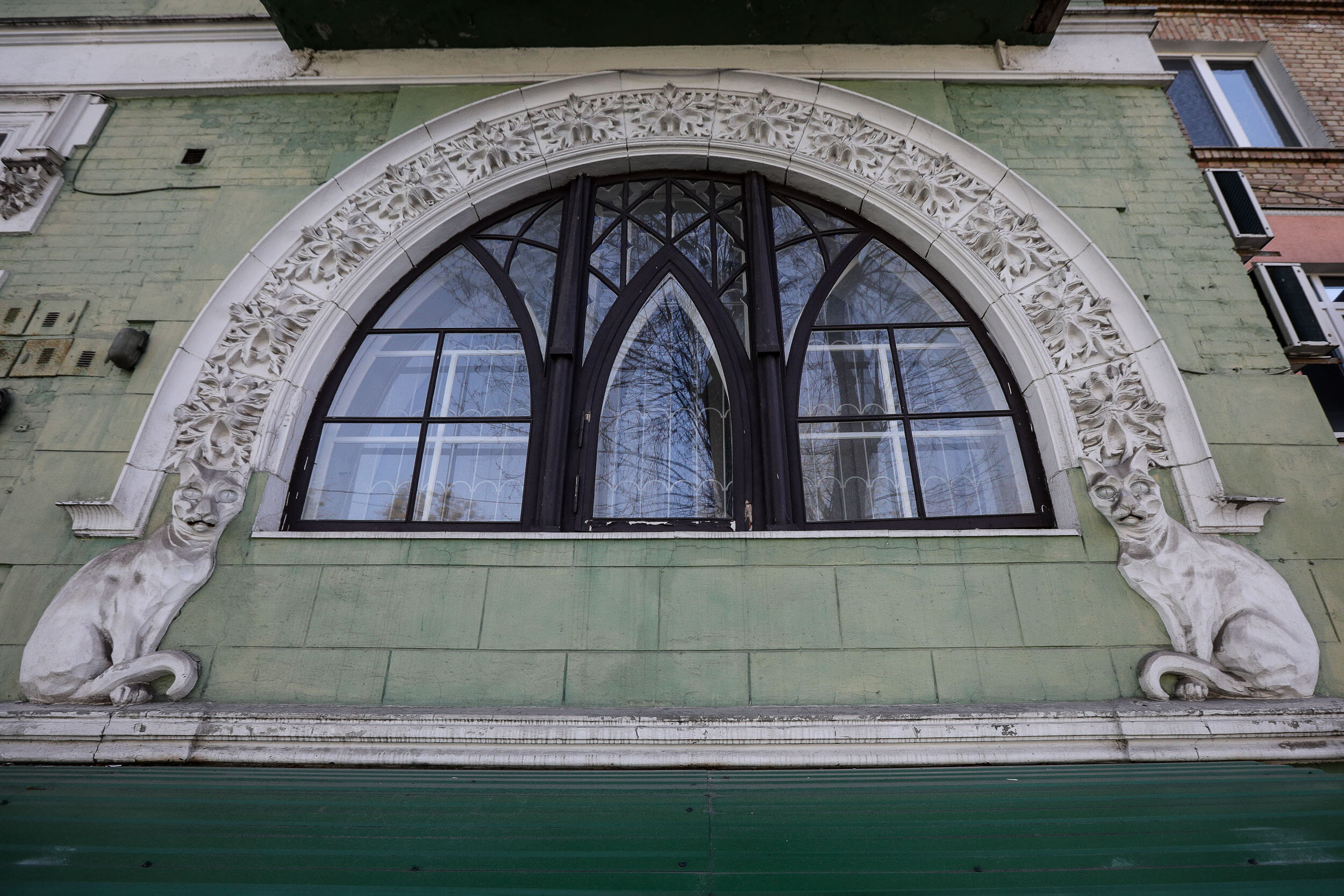The city of Kyiv dates back, by some accounts, to over 2,000 years ago.
But even its oldest buildings have not been around that long.
JOIN US ON TELEGRAM
Follow our coverage of the war on the @Kyivpost_official.
The oldest standing structure in the city is the 1,000-year-old Sofiyivsky Cathedral, but it was altered significantly by later reconstructions.
The Kyiv Post has put together a guide for those interested in seeing some of the capital’s oldest edifices.
Although a few of the buildings on this list don’t technically qualify as the oldest buildings in Kyiv, they are still a century old and hold some interest.
Their funky floral and creative decor and design attracts numerous visitors.
Urban activists fight to get special status for historical buildings to protect them from developers who would knock them down.
While the government sometimes promises to renovate these structures, it doesn’t always follow through.
The battle is ongoing.
The Oldest Home in Podil
Address: 7 Kontraktova Ploshcha
Built: 1798
Closest metro: Kontraktova Ploshcha, Poshtova Ploshcha
The wooden building on 7 Kontraktova Ploshcha is Kyiv’s oldest residential building. It survived the 1811 Great Podil Fire that raged three days and destroyed the majority of Podil, Kyiv’s most populated neighborhood at the time.
Before the fire, most of the neighborhood’s structures were made of wood. Afterwards, many of them were rebuilt from stone.
This building is one of the few remaining ancient wooden buildings in Podil. It was originally built for the noble family of Leontiy Vyshnevsky, a lover of Tsar Peter I’s daughter, Empress Elizabeth Petrovna. In 1891, the building became home to the Nechayev family of gingerbread makers, whose descendant stills live in the building.
Unofficial tours of the building are conducted by the owner himself, Kostyantyn Maleev, in his free time. Prices are arranged with Maleev directly. The tours are mainly in Russian. He can be contacted at 38 (050) 672 3538.

House of Peter I in Kyiv
Address: 6/8 Kostyantynivska St
Built: Unknown, estimated as early as 1696
Closest metro: Kontraktova Ploshcha
Another old wooden building that survived the Great Podil Fire is the House of Tsar Peter I. Although the building bears his name, there are no official records confirming whether or not the Russian emperor ever used this building as a secret home, as rumor suggests.
However, the building was home to several historical figures. One of Ukraine’s best-known Baroque composers, Artemy Vedel, lived in this house during the later years of his life. The building was also home to the founder of the Ukrainian therapeutic school, Feofil Yanovsky, and Doctor Ivan Voskresensky, the stepfather of Ukrainian writer Mikhail Bulgakov.
The Museum of Kamyanitsya Kievsky Viyta hosts Ukrainian and Russian language tours and exhibitions in the building. Tours cost Hr 70 for groups of up to five people and Hr 120 for larger groups. No English tours are available.
The museum operates from 11 a. m. to 7 p. m. Tours can be scheduled in person, by email at [email protected], on the museum’s Facebook page @ KamianytsiaViita or by phone 38 (044) 545–63–12.
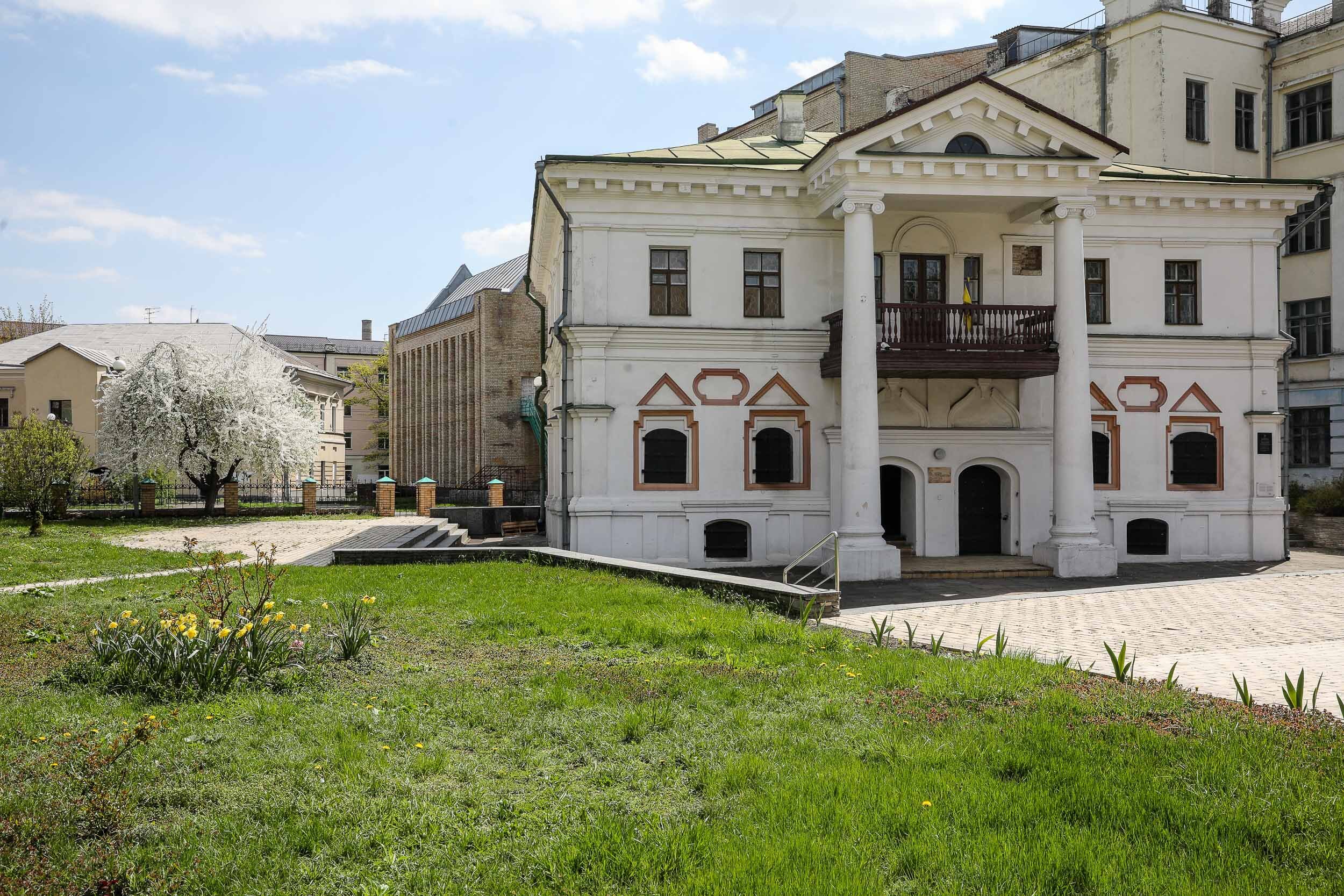
The House of Ivan Mazepa
Address: 16B Spasskaya St.
Built: End of 17th century
Closest metro: Kontraktova Ploshcha
Yet another survivor of the Great Podil Fire of 1811, this building has stood tall for over 300 years. The name comes from the legend that the building was built by famous Cossack Hetman Ivan Mazepa.
Although there are no official records that can confirm this claim, it has become widely accepted. The building has been known as the House of Mazepa for centuries.
This ancient Ukrainian Baroque styled home received architectural monument status in 1963 and the building became a museum in the 1990s. With more than 9,000 historical items, the museum dedicates its exhibits to preserving the history and culture of the Cossacks and their Hetmans.
Tours cost Hr 100 for groups of three and Hr 150 for groups of four or more. They’re conducted in both Ukrainian and English, but English tours must be scheduled ahead of time so that the English speaking tour guide is available. The museum can be reached at 38 (044) 425 55 49.
Mansion of Ivan Mykolayovych Tereshchenko
Street: 34 Taras Shevchenko Boulevard
Built: 1874
Closest metro: Universitet
This Victorian Neo-Gothic building was created in 1874–1875 by architect Andreas Ferdinand Krauss. It has seen a great deal of history during its long life, including, reportedly, a 1918 meeting where Volodymyr Vynnychenko publicly decided to use armed resistance against Ukraine continuing on as part of the Russian state.
The house was under the Tereshchenko family’s care for generations. The first of the Terechenkos to own the house was Ivan Tereshchenko, a painter and son of Nikola Tereshchenko, one of the largest sugar industrialists in the Russian Empire. Mykhailo Tereshchenko’s (who later became the foreign minister of Russia in 1917) art collection, which was stored in this house, was largely destroyed during the 1917 Bolshevik revolution.
Even though it’s a protected landmark, the building was almost destroyed to make room for an illegal construction project between the old house and the nearby Hilton Hotel. It was saved by the quick work of activists in 2017. The ex-deputy of Kyiv City Council and activist Olena Tereshchenko-Yeskina, the wife of Michel Tereshchenko, a descendant of the owner of the estate, and now the mayor of Glukhiv, is one of the building’s defenders.
The Contract House
Address: 1 Mezhihirska St.
Built: 1815–1817
Closest metro: Kontraktova Ploshcha
Mezhihirska is one of the oldest streets in Kyiv. After the 1811 Great Podil Fire, the street was reconstruct-ed to connect Podil to the Contract House. Originally a trading center, this building also hosted balls that attracted the nobility.
On the second floor was the concert hall which saw performances by famous Hungarian composer and pianist Franz Liszt and Italian opera singer Angelica Catalani. Famous visitors such as Honore de Balzac, Taras Shevchenko, Alexander Pushkin, and Adam Mickiewicz among others attended the grandiose events.
The House With Cats
Address: 23 Hoholivska St.
Built: 1909
Closest metro: Universitet (19 min walk)
Although not considered one of the oldest buildings, this house is over 100 years old. The outer architecture of the house reflects the late Art Nouveau trend with zoomorphic decor. Visitors can spot owls, cats, and some chimeras throughout its design. The owls are embedded within its columns and the carved cats look out through some of its windows.
One of the building’s famous residents was Stepan Timoshenko, who lived there in 1918. A professor at the Kyiv Polytechnic Institute, he co-founded the Ukrainian Academy of Sciences. Considered to be one of the fathers of modern engineering mechanics, he developed the Timoshenko beam theory and later became a mechanical engineering professor at Stanford.
A bronze plaque with a portrait of Timoshenko was installed on the facade of the building in 1995.
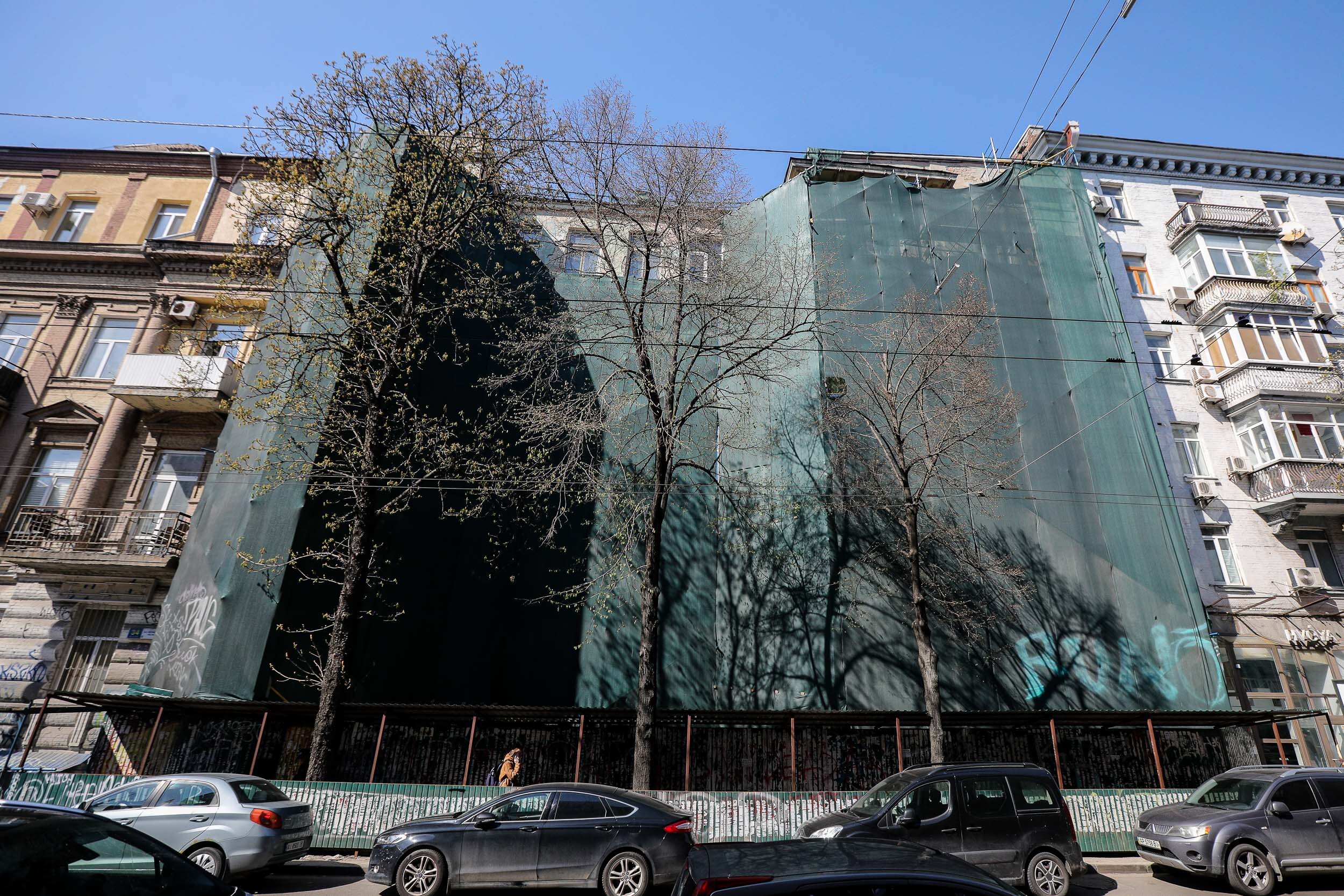
The Chestnut Building
Address: 32 Velyka Zhytomyrska St.
Built: 1911–1912
Closest metro: Zoloti Vorota
Also known as the “the house with snakes and chestnuts,” this four-story Art Nouveau house has been standing for 100 years. Reptilian carvings slither throughout the facade’s bay window and the stucco ornaments ripple with chestnut leaves.
Architectural activists were promised that the local government would conduct much-needed renovations but for now, the building remains closed.
You can also highlight the text and press Ctrl + Enter


